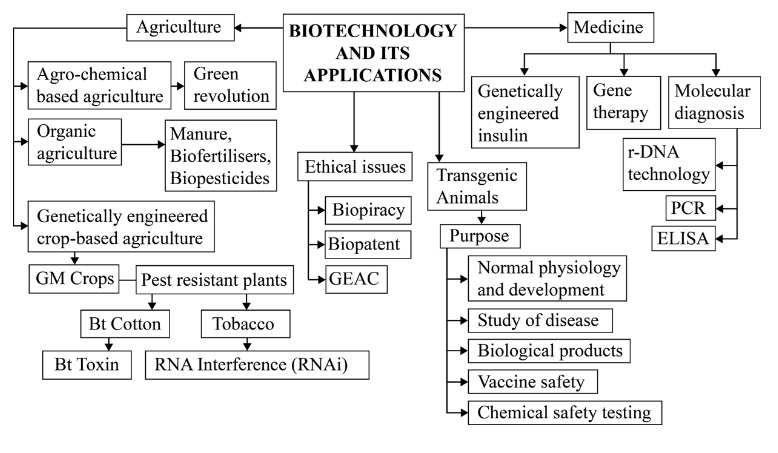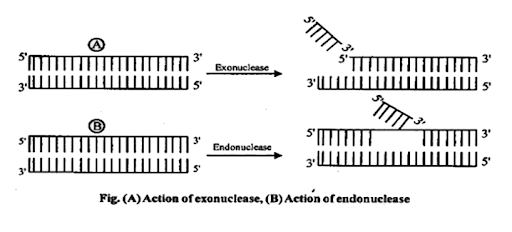NCERT Solutions for Class 12 Biology Chapter 9 - Biotechnology: Principles and Processes - Free PDF Download
FAQs on NCERT Solutions for Class 12 Biology Chapter 9 Biotechnology Principles and Processes
1. What are the Essential Topics in Chapter 9 - Biotechnology: Principles and Processes?
As the name indicates, the chapter focuses mainly on the modern-day practical applications of Biotechnology and its developments. The chapter has three sub-sections, and they are:
Principles of Biotechnology.
Tools of Recombinant DNA Technology.
Processes of Recombinant DNA Technology.
2. How many Questions and Exercises of this Chapter are in the CBSE NCERT Textbook?
The chapter Biotechnology: Principles and Processes have 12 questions in the exercises section. The breakdown of these questions are as follows:
Short Answers (1 word, MCQ, less than 2 Sentences) - 2 Questions.
Long Answers (2 Sentences or more) - 10 Questions.
Most of the questions from this chapter are long, with descriptive or listed answers. There are also diagrams pertaining to processes, structures, and flowcharts that describe various processes. These are important from an examination perspective.
3. How will Vedantu’s NCERT Solutions Help with this Chapter?
The major problem that a lot of students face with biology is the lack of understanding of the concepts. As a subject that is heavily based on learning a significant amount of theory, Biology can be difficult to understand. Most schools focus on pure theory, which means any practical understanding of the concepts will have to come from other sources. Therefore, learning the concepts through understanding them is essential to retain them.
Our NCERT Solutions play a crucial function in this regard. They are prepared and curated by experts who dedicate time and effort to ensure that you understand the concepts. The theory and the solutions are explained in the best way to connect the theoretical knowledge to the answers, helping to understand the concepts better through practice.
4. Where can I find the NCERT Solutions for Class 12 Biology Chapter 9 online?
Vedantu offers the best NCERT Solutions for Class 12 Biology, Chapter 9. They also provide a PDF of the NCERT solutions created by the professional for the benefit of the students. With the help of these questions, students can ace their exams. Download the important questions PDF at the Vedantu Website or the app free of cost.
5. What are the main topics covered in NCERT Solutions for Class 12 Biology Chapter 9?
The main topics covered in Biology Class 12, Chapter 9 are:
Principles of Biotechnology
Tools of Recombinant DNA Technology
Processes of Recombinant DNA Technology
Vedantu ‘s NCERT solutions are prepared by the best teachers in India. These will help the students to have a strong foundation in the theoretical portions of the subject. Download the PDF on the Vedantu website or the app free of cost.
6. Can you please brief the Class 12 Biology Chapter 9?
Chapter 9 of Biology Class 12 is about the techniques used for using living organisms and other enzymes in the production of products that are useful to humans. Check out the Vedantu website to attend free online live classes to gain in-depth knowledge on the concepts and study with the help of NCERT solutions.
7. Is Chapter 9 of Class 12 Biology important for the board exams?
Yes, Chapter 9 of Class 12 Biology is important to ace the board exams. You have to be well versed in all the concepts to secure a perfect score. Vedantu offers the NCERT solutions Biology Class 12 created by experts for the students to prepare and revise for their exams. Download the NCERT solutions from the Vedantu website or the app for free of cost to prepare for the exams. These questions will help the students in securing a perfect score in the board exams.
8. How is biotechnology useful to humans in everyday life?
Biotechnology plays a major role in the medical and healthcare industries, as they help in the discovery of new medicines for various diseases. To get well versed in all this chapter, students are encouraged to download the NCERT solutions provided by a qualified group of experts. Visit the Vedantu website to stream live online classes and download the PDF for free of cost.


























